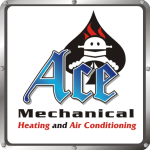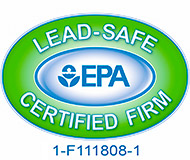Federal Warning on Faulty Furnaces Stokes Confusion
Saturday, December 2, 2000
Home Edition
Section: Business
Page: C-1
CONSOLIDATED FAULTY FURNACES
Safety: In some cases, utilities have shut down units that show no signs of failure or pose no fire risk to homeowners, agency says.
By: JENNIFER OLDHAM TIMES STAFF WRITER
A federal government alert on unsafe residential furnaces this fall has created intense confusion as homeowners and gas companies try to sort out who is at risk.
The attic furnaces, manufactured by Consolidated Industries, are alleged to have caused scores of fires in California in the last decade.
"We've received hundreds of calls from consumers who have had the gas company come out and red-tag their furnace and turn off the gas," said Russ Radar, a spokesman for the Consumer Product Safety Commission. "Some of the utilities are doing this in an arbitrary fashion that doesn't necessarily relate to the safety issues involved."
A red tag notifies homeowners that a warning has been issued that their furnace is not safe.
The attic furnaces, sold under at least 30 brand names and installed in homes in the state from 1984 to 1992, fail and can catch fire because of alterations made to comply with air-quality restrictions, according to federal safety investigators. A class-action lawsuit filed by California homeowners who have the faulty furnaces is scheduled to go to trial next summer.
The CPSC issued a warning about the furnaces this fall on the same day The Times published the results of an investigation that found that hundreds of thousands of unsuspecting California homeowners may have the furnaces. The commission had known about the faulty furnaces since the mid-1990s but failed to warn consumers.
The Times has received dozens of calls and e-mails from homeowners from Pasadena to San Diego who are trying to determine whether they have a faulty Consolidated furnace. Many have turned for help to their local gas company.
But in some cases, the gas companies are shutting down Consolidated furnaces that aren’t showing signs of failure or that were installed outside the boundaries of the Bay Area Air Quality Management District or the South Coast Air Quality Management District, Radar said. Most of the faulty furnaces are located in these areas–although Consolidated furnaces also were sold as replacement furnaces.
(Gas company technicians relight pilot lights on furnaces and make minor fixes but do not do major repair work that involves taking the unit apart. A licensed contractor must look at parts inside Consolidated furnaces to determine whether there is damage.)
The CPSC recently sent a letter to gas companies saying inspectors should red-tag only Consolidated furnaces with an "X" at or near the end of the furnace's model number. These furnaces have metal rods installed on the top of the burner that increase the temperature in the furnace. These rods, designed to decrease nitrogen oxide emitted by the furnace, can cause the burner to warp and eventually allow fire to escape, fire investigators say.
But federal safety investigators say the new CPSC caveat may cause inspectors to miss units whose model numbers were changed by Consolidated distributors to reflect their brand names.
"The only problem with this theory is that it works if the model numbers start with HAC or HCC, but several distributors changed the model numbers," said Gerald Zamiski, an engineer at Long Beach-based Vollmer-Gray Engineering Laboratories who tested hundreds of Consolidated's furnaces for a report commissioned by the CPSC.
For example, Trane, one of four distributors named in the class-action lawsuit against Consolidated, starts the model numbers on the Consolidated furnaces that bear its brand name with the designation THN.
Addison Product Co., Bard Manufacturing, American Standard/Trane Co. and Amana Home Appliances are named in the class-action suit, which is scheduled to go to trial July 2 in Santa Clara Superior Court. About 150,000 homeowners are included in the class.
Southern California Gas Co. red-tagged about 1,400 Consolidated furnaces but now is sending letters to residents outside the South Coast Air Quality Management District offering to reinspect their furnaces, said Denise King, a gas company spokeswoman.
San Diego Gas & Electric inspectors have red-tagged about 840 furnaces since the original warning was issued, said Ed Van Herik, a utility spokesman. When it received the CPSC’s letter, the utility sent a follow-up letter to 740 of these residents saying it would reinspect their furnace, he said.
Even if they determine they have a Consolidated furnace, homeowners are having a tough time getting insurers to pay for a replacement. Most have had to pay at least $2,000 to have a new furnace installed. Some have had contractors refuse to come to their home if they think they have a Consolidated unit.
Meanwhile, Zamiski said he’s been hired by two dozen builders in the state to inspect furnaces in their communities. Southern California’s fourth-largest builder, Shea Homes, said it sent about 9,000 notices to residents in its suburbs and received 600 or so replies. It plans to send out 5,000 additional notices, said Max Johnson, vice president and general counsel at J.F. Shea Co.
The CPSC is still in talks with companies that distributed Consolidated furnaces to try to get them to fund a recall, Radar said.
The agency said it didn't issue a warning earlier about the furnaces because it was trying to negotiate a recall with Indiana-based Consolidated Industries. But it was unable to do so when the company filed for Chapter 7 bankruptcy and liquidated its assets last summer.
Copyright 2000 Los Angeles Times.


